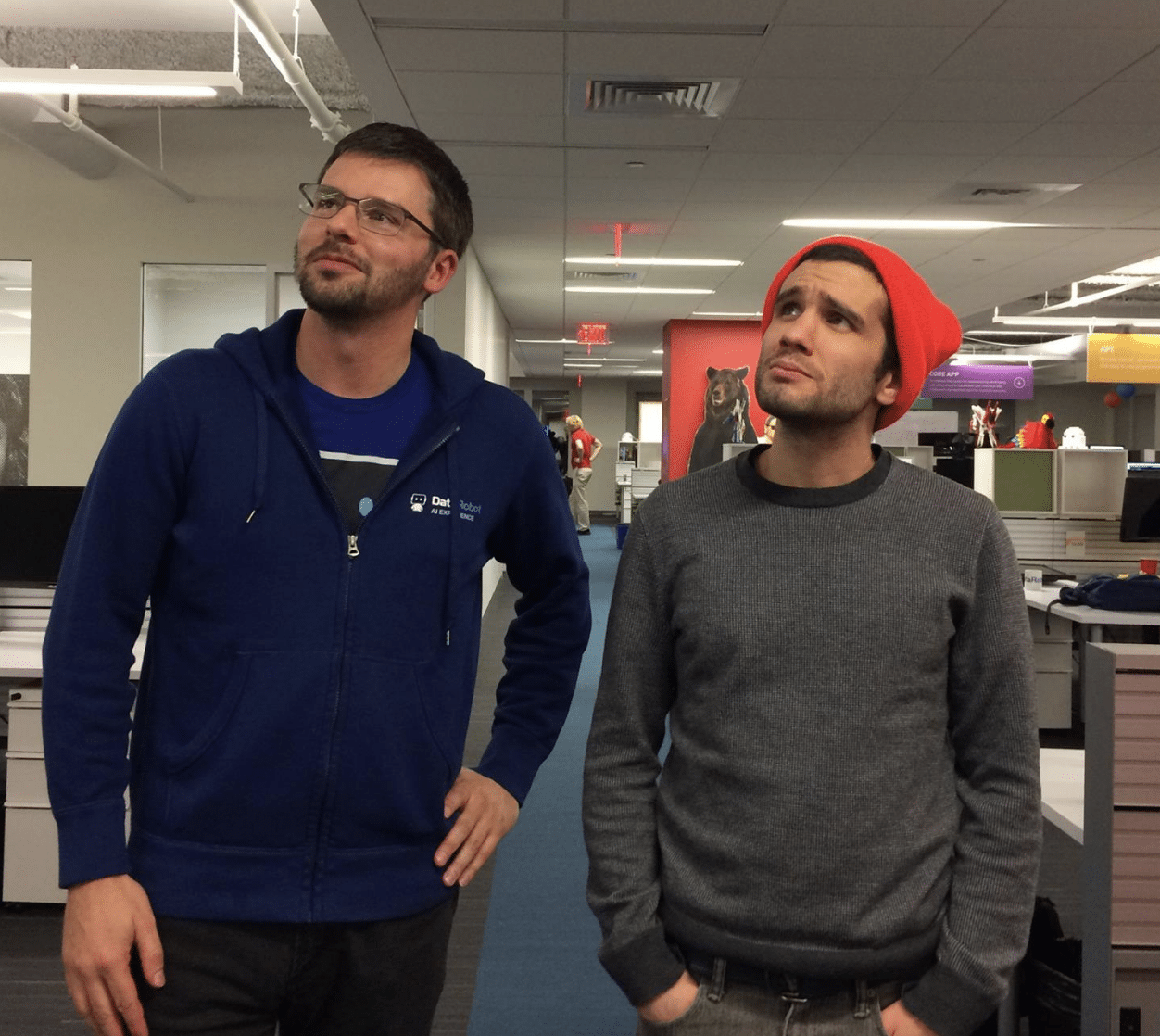
Episode summary: In this week’s episode of AI in Industry we speak with DataRobot CEO Jeremy Achin about the future of AI applications for people without a data science background. We specifically discuss how future AI tools might bypass the complexity of machine learning programming and make intuitive interfaces that function more like today’s everyday software. Our business leader listeners will be interested in Jeremy’s predictions about how the UX for AI-related tools might become more simplified and code-less in the coming 5 years.
Subscribe to our AI in Industry Podcast with your favorite podcast service:
Guest: Jeremy Achin, Data Scientist and CEO at DataRobot
Expertise: Data mining, predictive modelling, predictive analytics
Brief recognition: Jeremy attended the University of Massachusetts in Lowell for undergrad, and was previously the Director of Research and Modeling at Connecticut based Travelers Insurance for five years. He went on to become the Co-Founder and CEO of DataRobot in 2012, a position he has held since.

Big Idea
According to Jeremy, AI tools of today are already starting to evolve in terms of making interfaces more accessible to employees in the enterprise who are not very familiar with the internal mechanisms of AI (for example like enterprise data engineers who do not have experience with AI and machine learning).
Below are a collection of Jeremy’s thoughts about the evolution of AI interfaces in the 3-5 years ahead:
- Jeremy believes that in 3-5 years, users won’t need to understand the inner workings of AI (knowledge of neural networks or other AI algorithms) to functionally use most AI tools. The user interface will keep options simple, and make the user experience streamlined.
- Communication with the AI tools needs to start with a clear objective, a specific function that users may want to optimize and then configuration towards the objective needs data. For example, in the future, marketing automation executive may set an objective like maximizing the quantity of sales driven by his email campaigns. The AI would also be provided with the objective (e.g optimizing the open rate on weekly newsletters in this case) and historical data from previously automated marketing campaigns, in order to find patterns that led to success for that specific goal.
- The AI tools of the future will be capable of taking these inputs from a human and building the optimization ‘back-end’ on its own and learn through interactions from the data and metadata. In the example above, marketing automation AI tools of the future might be capable of looking at historical data from email newsletter open rates and resulting sales and provide actionable suggestions to users aimed at gaining more leads.
- Business leaders must also come to terms with the fact that there is never going to to be enough AI talent and Ph. Ds, which in turn means that the automation of many machine learning functions will be NECESSARY to meet the business demand for AI in the years ahead. The most successful data scientists in the future will be those who embrace automation.
Interview Highlights with Jeremy Achin from DataRobot
The main questions Jeremy answered on this topic are listed below. Listeners can use the embedded podcast player (at the top of this post) to jump ahead to sections they might be interested in:
- (2:45) How are AI tools going to have to evolve in order to compensate for a lack of widespread academic training in AI?
- (5:45) What would conversing with AI tools look like in the next three to five years?
- (7:27) In terms of training people within the AI ecosystem, to upskill what does this look like today?
- (16.01) What does the future of training business executives look like for AI?
Subscribe to our AI in Industry Podcast with your favorite podcast service:
Header image credit: Adobe Stock











